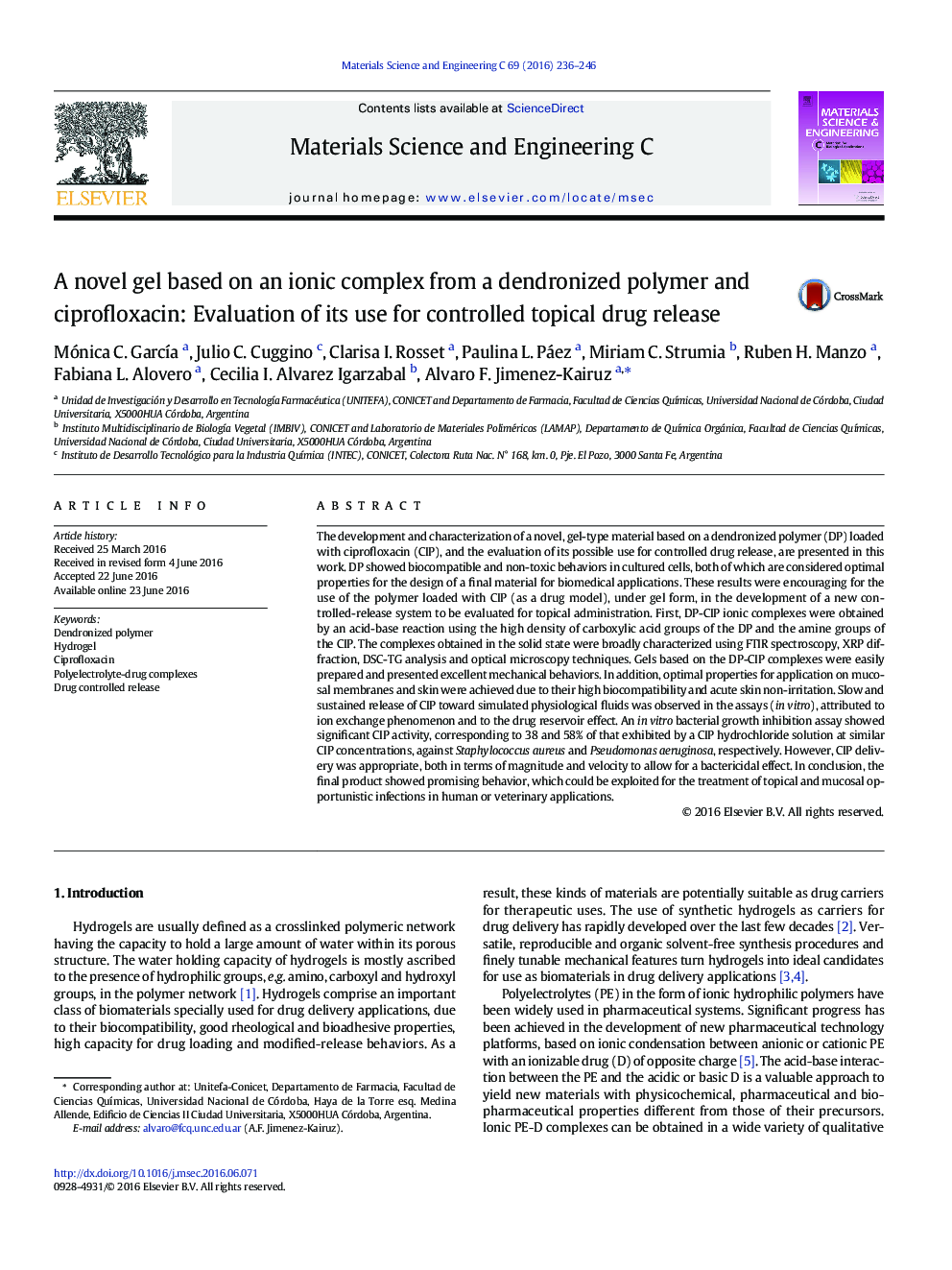| کد مقاله | کد نشریه | سال انتشار | مقاله انگلیسی | نسخه تمام متن |
|---|---|---|---|---|
| 1427849 | 1509152 | 2016 | 11 صفحه PDF | دانلود رایگان |
• A novel hydrogel based on dendronized polymer Behera amine derivative was evaluated as drug carrier.
• Ionic complexes between dendronized polymer and ciprofloxacin were obtained and physical and chemical characterized.
• In vitro and in vivo evaluation of gel-type material based on complexes for topical drug control-release application
The development and characterization of a novel, gel-type material based on a dendronized polymer (DP) loaded with ciprofloxacin (CIP), and the evaluation of its possible use for controlled drug release, are presented in this work. DP showed biocompatible and non-toxic behaviors in cultured cells, both of which are considered optimal properties for the design of a final material for biomedical applications. These results were encouraging for the use of the polymer loaded with CIP (as a drug model), under gel form, in the development of a new controlled-release system to be evaluated for topical administration. First, DP-CIP ionic complexes were obtained by an acid-base reaction using the high density of carboxylic acid groups of the DP and the amine groups of the CIP. The complexes obtained in the solid state were broadly characterized using FTIR spectroscopy, XRP diffraction, DSC-TG analysis and optical microscopy techniques. Gels based on the DP-CIP complexes were easily prepared and presented excellent mechanical behaviors. In addition, optimal properties for application on mucosal membranes and skin were achieved due to their high biocompatibility and acute skin non-irritation. Slow and sustained release of CIP toward simulated physiological fluids was observed in the assays (in vitro), attributed to ion exchange phenomenon and to the drug reservoir effect. An in vitro bacterial growth inhibition assay showed significant CIP activity, corresponding to 38 and 58% of that exhibited by a CIP hydrochloride solution at similar CIP concentrations, against Staphylococcus aureus and Pseudomonas aeruginosa, respectively. However, CIP delivery was appropriate, both in terms of magnitude and velocity to allow for a bactericidal effect. In conclusion, the final product showed promising behavior, which could be exploited for the treatment of topical and mucosal opportunistic infections in human or veterinary applications.
Figure optionsDownload as PowerPoint slide
Journal: Materials Science and Engineering: C - Volume 69, 1 December 2016, Pages 236–246
